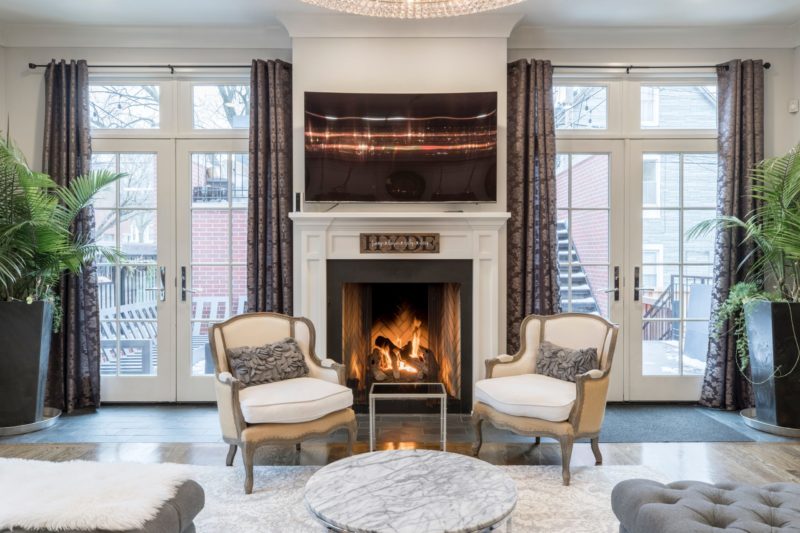You might have encountered the term transitional loveseat. That’s why you’re here reading this, right? So, you ask yourself, what is a transitional loveseat? Well, let me help you with that.

Transitional loveseats, as opposed to delicate sofas with fussy trimmings and spindly legs, appear robust and comfy with little frills. Transitional loveseats guarantee that rooms do not appear cold and austere, yet they seem old-fashioned and traditional.
Transitional furniture is created by combining classic and contemporary features. Because of the blend of textured fabric and clean, modern forms, transitional couches emanate a casual elegance.
To soften the straight form, designers usually incorporate a slight curve around the arms or frame. Upholstery options include leather and corduroy, with the fabric featuring a neutral pattern or a single solid color for essentials sophistication.
Another thing to assess that is involved in what is a transitional loveseat is the transitional style overall. What is this type of style?
Transitional Style
Transitional design is a blend of traditional and modern furniture, finishes, materials, and textiles that result in a classic, timeless look. Furniture lines are essential yet elegant, with either straight or rounded forms.
Graphic patterns on overstuffed couches and textured chenilles on elegant oak frames are only two examples of fabric.
To create a clean, tranquil environment, the transitional palette depends on a lack of color. Dark brown may lend depth to a taupe, tan, and vanilla neutral palette.
A potted orchid gently arching in front of a window, white mats that show off pictures in basic black and silver frames, and an oval wooden tray that serves as a resting place for similarly shaped silver candleholders all contribute to the minimalist aesthetic.
This type of grouping serves as a complement to the furnishings.
The lack of color allows for intriguing textures, such as olive-colored corduroy on the depicted couch and a smooth, creamy white cotton on two side chairs. Soft ultra suedes, flexible leathers, and nubby chenilles are also beautiful alternatives for a transitional room.
For a comfortable modern style, the look blends masculine and feminine elements. In a transitional-style decor, curves and straight lines coexist. The items are large yet not overwhelming in scale.
The lack of adornment and embellishment puts the focus on the design’s simplicity and elegance.
Mission-style couches are transitional in style, with straight backs and classic wooden arms.
Putting Transitional Couches in Place
Transitional couches work well in both formal and informal settings. The furniture fits in equally well in modern, up-to-date houses as well as more conventional settings.
The soft curves or wooden accents of the sofa anchor the room, while the straight lines give the furniture a slightly futuristic appearance. To blend a variety of styles, use transitional couches in eclectic-style interiors and great rooms.
Sofa Styles Comparison and Contrast
Traditional couches include carved wood and intricately patterned fabric, and the austere style works best in the most formal settings. To avoid a stuffy, unpleasant feeling in your formal living room, opt for transitional couches rather than conventional items.
Cottage-style couches, with rattan accents and cottony upholstery, add a soothing touch to any area; utilize transitional sofas for a more sophisticated aesthetic. If the ultramodern, space-age aura of contemporary furniture turns you off, transitional items will be far more tolerable.
Bringing a Transitional Space Together
Aside from transitional furniture, use neutral hues to give your complete area a mix of contemporary and classic. Off-white or beige walls, wood flooring, and color in small quantities are appropriate for transitional rooms.
Use textured textiles, such as fuzzy blankets, silky curtains, and organic carpet to give visual interest to a monochrome environment. Choose accent items that are the same scale as the rest of the furniture in space and mix wood and metal accents to blur design styles.
What does transitional style furniture look like?
Minimalism without sacrificing charm or individuality. A subdued palette heavy on neutrals, with darker hues saved for accent pieces. A concentration on comfort, particularly regarding the sofa or bed, tends to be on the bigger side.
Is the transitional style still popular?
The classic lines of traditional designs are retained in transitional décor, but the colors and furniture are generally more modern in appearance. The transitional design emphasizes soft lines and comfy furniture, yet without the fuss of the conventional method.
What is the distinction between transitional, contemporary and traditional design?
The transitional style is a mix of contemporary and traditional elements. This style uses the neutral color palette of modern design but avoids geometric forms favoring the rounded appearance of conventional techniques.
Modern is another term for contemporary style. This design is most well-known for its sleekness, straight lines, and minimalist appearance. The color pallet is almost usually neutral, with flashes of bright color thrown in here and there.
Contemporary furniture is always quite simple in shape, with straight legs and arms. Because of their strong lines, glass and metal are frequently utilized to build Contemporary furniture.
Traditional fashion is timeless in every sense of the term. Craftsmanship is accentuated in this design by using extensive detailing such as hand-carved wood, patterned textiles, and elaborate metalwork.
Conclusion
This ends our talk on what is a transitional loveseat. Let this article enlighten you about transitional loveseats. It is a different style that you might want to give a try. Be creative with your interior design!
